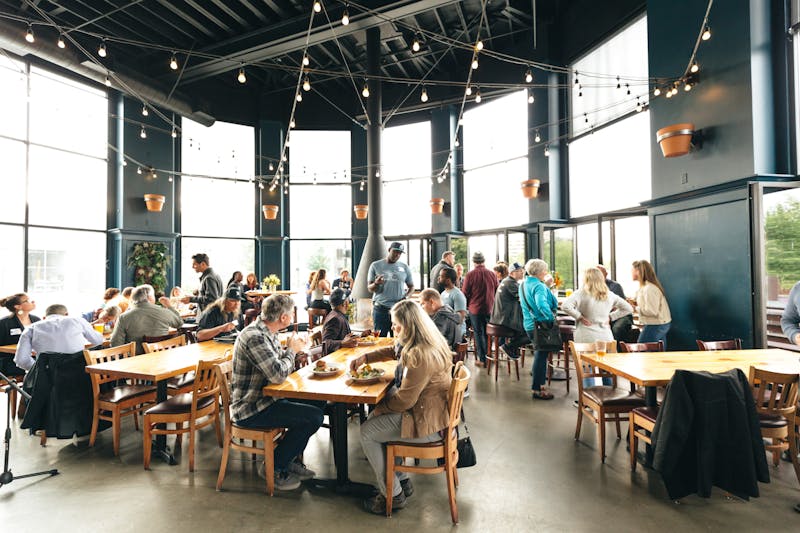Mapping Your Customer’s Digital Journey

Booking vacations can be an exciting experience, but it can also require a lot of research from the traveler’s perspective. Customer journey maps are a great tool to visually represent your customers’ experience from beginning to end, but what exactly are they, how do you create them, and what is the best way to use them for your tour, activity, or attraction business?
Journey mapping uses pictures to represent the process to better understand the flow of experiences a customer has with your business where words can not. It can be a challenge to get in the minds of your customers and untangle the ten or more steps it took for them to get from landing on your homepage to finalizing their booking when your expectation was that it should only take one or two steps. Wherever the confusion may be, customer journey mapping can help lay out the process and identify the touchpoints from start to finish. By practicing journey mapping, you not only help establish a consistent narrative across multiple channels but also surface the needs and pain points of your customers to ultimately align their journey with your overall goals.
Since the typical customer journey can no longer be represented in a linear model, it’s important for businesses to understand the current process customers are experiencing from the first to the final touchpoint. The ease of digital movement between multiple channels is becoming increasingly more popular, and customers are weighing their options now more than ever, so mapping can be hard to visualize. But no matter the representation tool, Excel sheets to post-it notes on a whiteboard, it’s important your for your map to make sense to all those who will be using it.
Stages:
|
1. Set clear objectives for the purpose of your map
Before jumping into the visual aspect of the map, it’s important to step back and ask yourself why you are creating this journey map in the first place. Define your goals. You can start by answering questions such as these as an initial guide.
- Am I trying to drive awareness toward my tours and activities?
- Are too many potential customers being lost to competitors?
- Is my tour company easy to find when using online search engines?
- Am I driving consideration to my tours, but losing potential customers because the booking process is too hard to follow?
- Do I want to create a network of repeat customers?
- Are people sharing positive reviews of their experiences on my tour?
Once your goals are clearly defined, it can be helpful to create personas for each of your targeted customers.
2. Identify customer personas and define their goals
Personas help give a clear understanding of who you are trying to reach. By stepping into the mind of your ideal customer type(s), you can develop the language and psychographic around who you’ll be speaking to. Within the travel space, there is a wide range of personas you could be speaking to, ranging from business travelers to family vacationers to solo adventure seekers. The easiest way to identify your customers is by talking with them. Getting feedback through questionnaires is a good method to get direct answers. To get you started, questions can include:
- How did you hear about us?
- Where were you first drawn to on our website?
- How easy was our website for you to navigate?
- How could we have made your experience easier?
- Did you end up booking a tour/activity/etc. with us?
By building out personas, you not only identify the best methods of communication for each customer type but can also save time investing in certain channels where you may not have an active audience. If your ideal customer isn’t engaging with your business or similar brands on Twitter, then you don’t need to invest in Twitter. If customers aren’t downloading the boating manual prominently displayed on your website, then you can use that space to develop a well-thought-out piece of content based on your customers’ high levels of engagement. So how do you identify where those high levels of engagement are?
3. List out all touchpoints
Most travelers these days are using multiple channels across multiple devices to book. Understanding all of the places where your customers interact with your business is a very important aspect of creating your journey map. According to Think Google, 94% of leisure travelers switch between devices when booking a trip. This means keeping everything from pages of your website on desktop and mobile, as well as any social channels, paid ads, emails, or third-party review sites top of mind. It’s helpful to list all touchpoints YOU believe customers should be using along with any data you can gather from backend research. Google Analytics can be a valuable tool in this step to see where a majority of your traffic is coming from. Any overlap between what you see as necessary channels and the backend research can be used as a good baseline for the channels to focus on. We’ve broken down the customer journey into six “micro-moments” to understand which touchpoints to you can focus on.

4. Define the “micro-moments” of your customer journey
This is where you can begin to piece together your map. You have your goals clearly outlined, and now you can align to your customer’s goals. Different personas come with different experiential expectations. Get to know your customers and understand their expectations throughout the whole journey by walking through these micro-moments.
- Dreaming
The stage where you grab the consumer’s attention — your visitors are discovering their options and getting inspiration from channels like social media, pictures, and ads. They are scrolling through social media feeds sending friends photos of inspirational travel destinations.
- Research
The stage where consumers start looking into specific activities. Examine where your personas are searching for activities in your niche. 74% of families use search engines for researching travel options, making Google Ads a good tool to get in front of traveling families, while 87% of millennials use Facebook to make travel decisions, making user-generated content (UGC) a valuable resource.
- Planning
By now customers have determined where they will be going and are aware of your company and the activities you offer. They start weighing their options and figuring out how the experiences you offer fit into travel plans compared to other options.
- Booking
Your company is the best fit and they’ve locked in a booking! You landed the customer and they are feeling excited for the experience you’re going to be providing them.
- Experiencing
You provide the perfect catered experience before, during, and after your tour or activity. They are posting live photos and are already planning their next activity with you.
- Sharing
Advocacy stems from the great experience that you provided to your customer. You’ve secured a brand ambassador and TripAdvisor just sent you a notification that you just received a glowing five-star review.
Now you’re ready to take all of the ingredients from the previous stages and bake the cake. Here your map will come to life. As mentioned, the way you display your customer journey map is entirely discretionary, but feel free to use this as a template.
5. Take yourself on the customer journey
For every persona you’ve developed and every touchpoint you’ve identified, go through the journey. Put on your “first-time user” goggles and ask yourself the important questions as you’re walking through the user experience from every angle.
- Are you clicking into the website but then closing out before booking a tour?
- Are you easily guided to the checkout?
- Do you feel like you are receiving the right amount of support?
- Can you identify the overall goal of the website easily, and how many clicks did it take to get you there?
By answering these questions and then analyzing your results, you can show where customer needs are not being met before a potential customer ever visits your platform.
6. Go back, assess, and make changes
A cartographer’s work is never done. Your map should be a constant work in progress. By setting aside time to review your map, you are able to identify gaps, pain points, or opportunities quickly and ideally keep growing your business. Keep in contact with your customers, value their feedback, and always keep improving!


